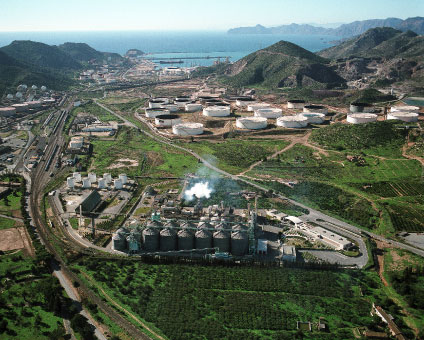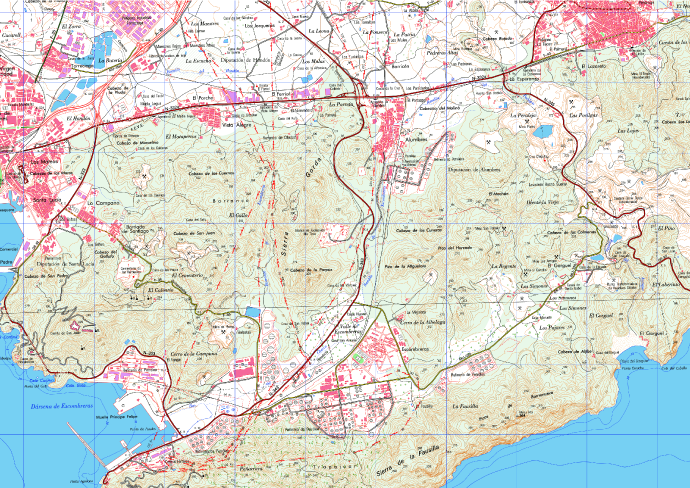ESCOMBRERAS VALLEY
HISTORY
NON STOP EVOLUTION
The recent industrial history of the Escombreras Valley goes back to 1950 with the development of an important petrochemical complex which after several acquisitions by different groups would end up belonging to Repsol and a heat power plant. These premises went under several consecutive extensions, and in 1957 the Central Térmica de Hidroeléctrica Española y Butano was established.
Different industries showed interest in the Valley, and thus natural gas plant Enagas started operating at Escombreras in 1989 increasing the industrial presence. The following years were followed by the construction and start-up of other industrial plants such as Aemedsa (1995), Química del Estroncio (2000), Iberdrola (2002) or the most recent creation of Ilboc (2014) lubricants plant.
The industrial history of the Valley is marked by a constant evolution of the companies and expansion of the capacities of the different facilities of the companies. In past recent years relevant developments in infrastructures have been made, such as the improvement of the different accesses to the Valley, the expansion of the Escombreras basin or the extension of the railway line.
In the XXI century, the Escombreras Valley is seen as a modern industrial hub, strategically located in the Mediterranean while connected with the rest of the peninsula by pipelines.


